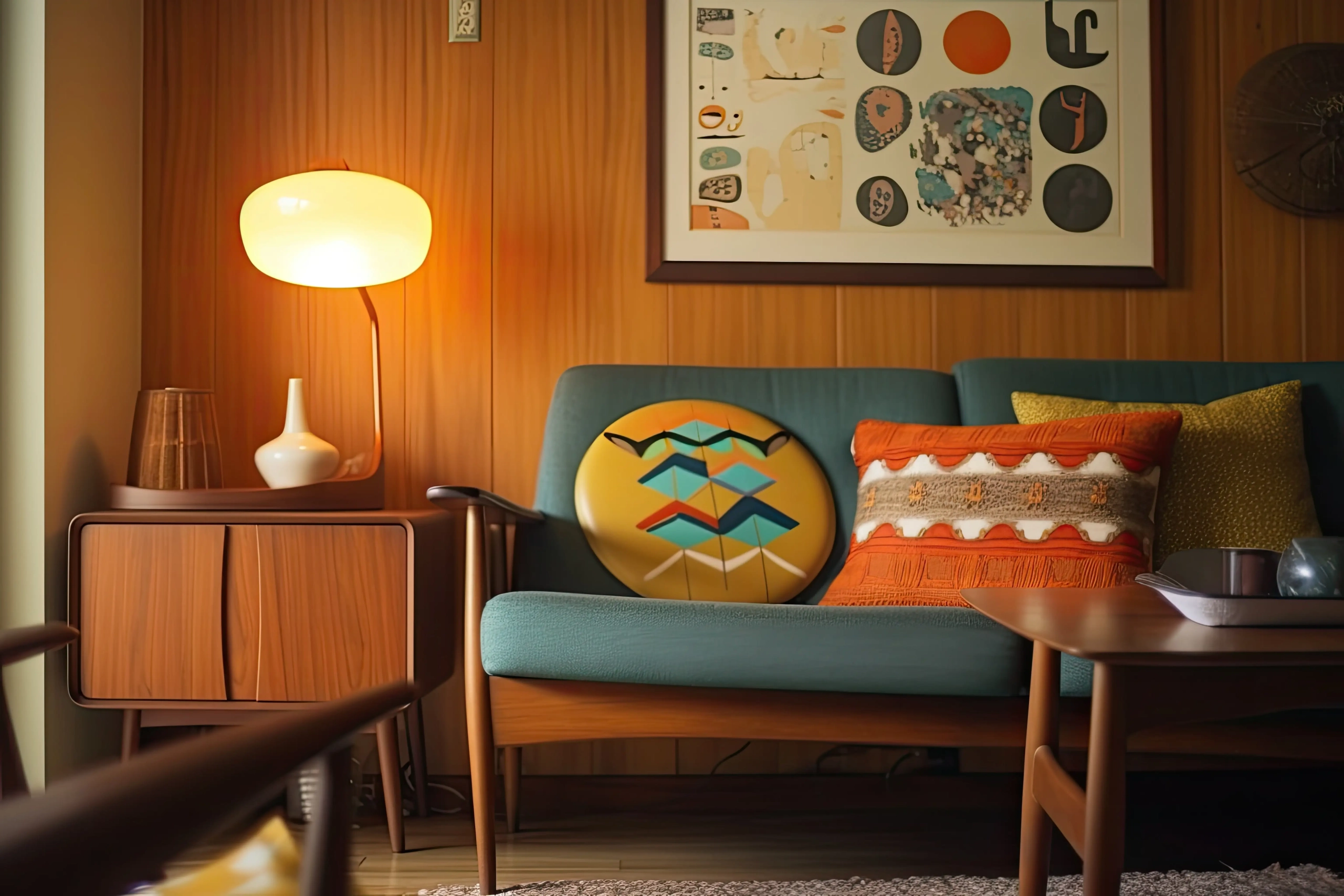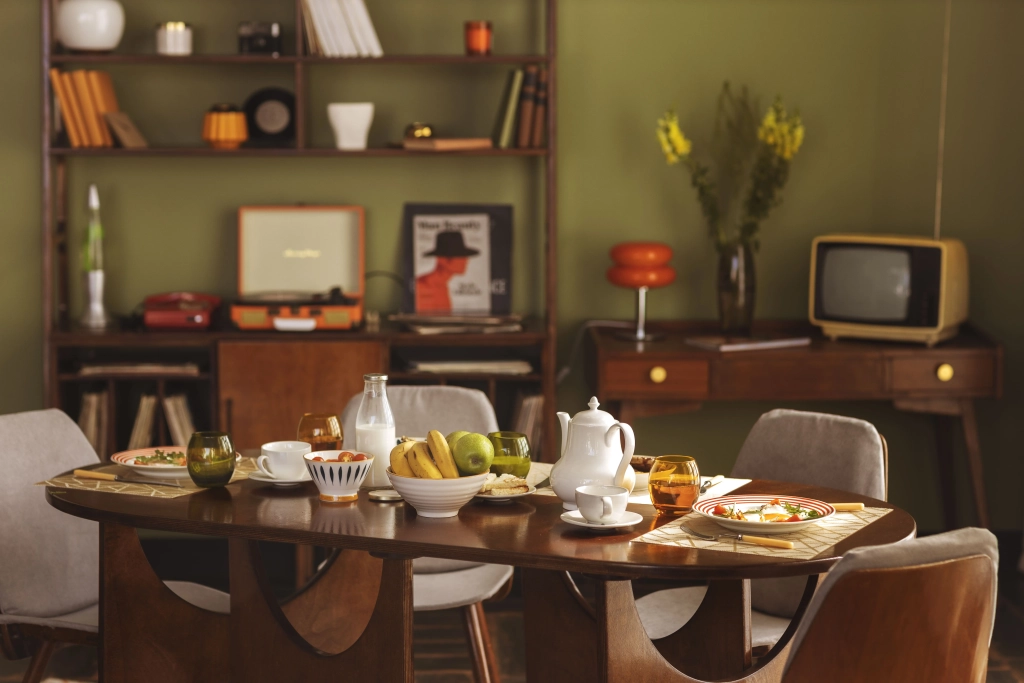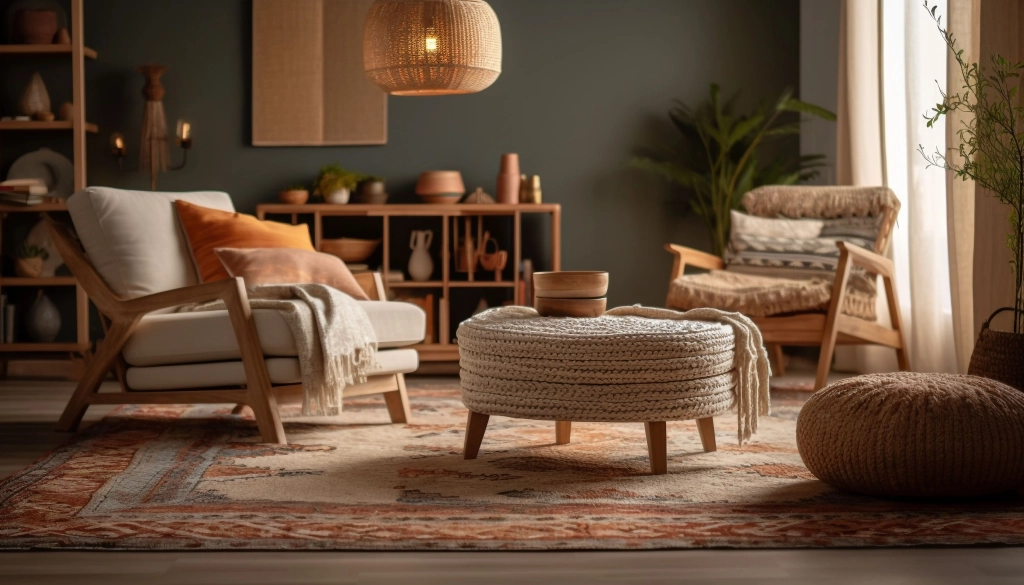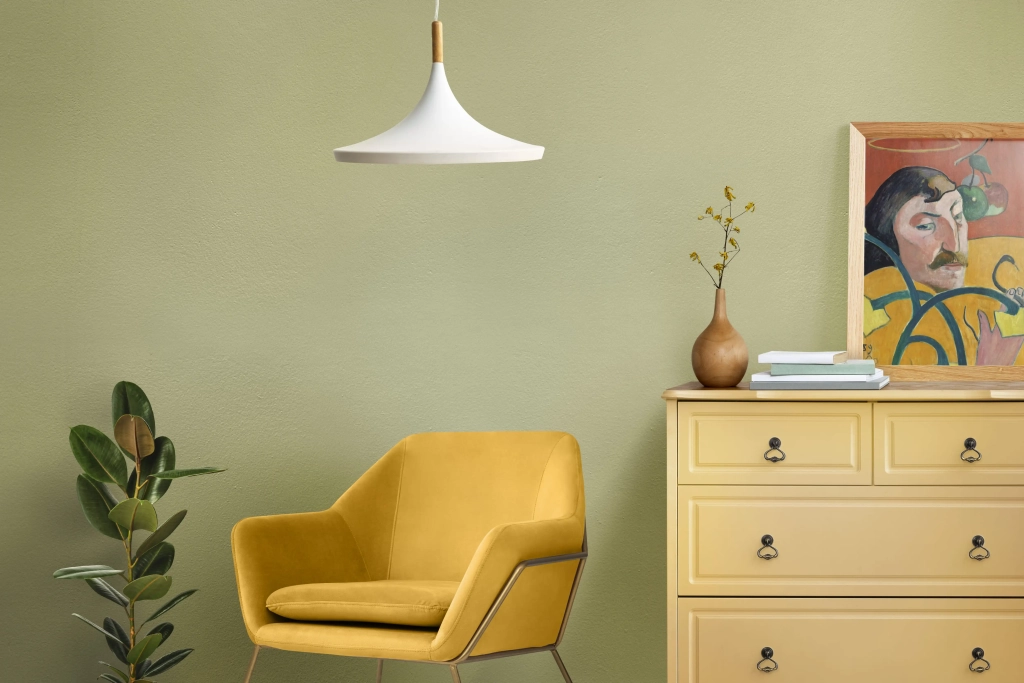Back to the Future: Retro Revival in 2023 Interior Design

“Everything old is new again.” You might’ve heard this saying, and in the world of interior design, it couldn’t be truer. 2023 has seen a blast from the past with Retro design, Vintage interiors, and Nostalgic decor trends taking center stage.
But why are these styles making a comeback, and what do they mean for homeowners and designers today?
Our homes are not just functional spaces; they’re a reflection of our personalities, memories, and dreams. In 2023, homeowners and designers alike are embracing elements of the past to create contemporary spaces.
RELATED: Achieving Harmony: Balancing Aesthetics and Functionality in Home Design
Why Retro Design is Making Waves
The late 20th century was a time of innovation and bold design choices. From the flamboyant 70s to the eclectic 90s, every decade had a signature style. Today, these designs are coming back, not merely for nostalgia but because they represent creativity, rebellion, and individuality.

Vintage Interiors: More Than Just Aesthetic
When we speak of vintage interiors, it’s not just about replicating an old look. It’s about infusing spaces with history, stories, and a sense of timelessness. Vintage pieces, whether they’re family heirlooms or flea market finds, add depth and character to a room.
Nostalgic Decor Trends: Beyond Visual Appeal
While visual appeal plays a significant role, the current shift towards nostalgic decor trends is also rooted in emotion. These designs remind us of simpler times, evoking memories of childhood homes or grandparents’ tales.
2023’s Most Popular Retro Styles
The beauty of interior design is its cyclic nature; trends rotate and evolve, combining elements from the past to create fresh aesthetics. Here’s a deep dive into the retro styles making waves this year:
Mid-Century Modern
This style is synonymous with the 1950s and 60s. Known for its sleek lines, organic curves, and geometric forms, Mid-Century Modern celebrates functional designs with a touch of flair. Picture walnut wood credenzas, tulip chairs, and sunburst clocks.
Art Deco
Hailing from the Roaring Twenties, Art Deco is all about luxury. With its bold geometric patterns, lavish materials like marble and gold, and a penchant for symmetrical designs, spaces styled in this manner exude opulence and drama. Imagine flapper-era glitz and glamour manifested in interiors.

Boho Chic
A style without stringent rules. Boho Chic is about expressing individuality, with a relaxed, free-spirited, and eclectic mix of textures, patterns, and colors. From macramé hangings to Persian rugs, this style is a testament to the free spirit in all of us.
Blending the Old with the New
The retro revival in 2023 isn’t about turning homes into museums. Instead, the focus is on seamlessly incorporating vintage elements into modern designs.
A Chesterfield sofa might be paired with sleek, minimalist lighting, or a Mid-Century Modern table might find its match with contemporary chairs. By blending these eras, homeowners can create spaces that resonate with familiarity while still feeling innovative.
Retro Colors Making a Comeback
Colors play a pivotal role in setting a room’s mood. This year, we’re seeing a shift towards hues reminiscent of the 60s and 70s. Olive greens invoke a sense of calm and earthiness, mustard yellows bring warmth and vibrancy, while burnt oranges remind us of autumn leaves and cozy evenings.
These colors, when used judiciously, can transform spaces, making them feel both nostalgic and trendy.
Iconic Retro Furniture Pieces
Nostalgia is a powerful sentiment, and what better way to invoke it than by featuring iconic furniture pieces from bygone eras?
Egg chairs, reminiscent of the Space Age fascination of the 60s, or formica tables that harken back to family dinners from decades ago, serve as conversation starters and link the present to the past.
Vintage Textiles and Patterns
Textiles are a game-changer. They offer the easiest way to infuse a touch of retro without committing to significant changes.
Psychedelic swirls can transport one to the vibrant 70s, paisley prints evoke the spirit of the 60s, and bold geometrics are a nod to the Art Deco era. Cushions, curtains, or even an accent chair in these patterns can add a vintage flair.

Nostalgic Wall Art and Decor
The walls of our homes can serve as canvases that tell stories. Classic movie posters, evocative black and white photographs, or advertisements from yesteryears can elicit feelings of nostalgia. Whether it’s Audrey Hepburn’s iconic image or a vintage Coca-Cola ad, wall art provides a glimpse into the past.
Antique vs. Reproduction
While there’s undeniable charm in genuine antique pieces, they often come with their own set of challenges – fragility being a primary concern. Reproductions, on the other hand, marry the designs of the past with today’s durability and functionality. They’re often more affordable and adaptable to contemporary lifestyles, making them a favorite for many.
Sustainability and Vintage Decor
The retro revival also speaks to a global shift towards sustainability. Vintage is sustainable. By reusing and repurposing old furniture, homeowners not only make an eco-friendly choice but also own a piece of history. It’s style with substance.
Retro Revival in Commercial Spaces
Homes aren’t the only spaces getting a retro makeover. Walk into cafes, restaurants, or even offices, and you’ll see traces of yesteryears. Vintage leather couches in coffee shops, Art Deco lighting in restaurants, or Boho chic lounges in co-working spaces – the retro revival is everywhere.
The Role of Technology in Retro Revival
Modern problems require modern solutions. Augmented reality and VR tech are revolutionizing how homeowners shop for furniture.
Want to see how a Victorian-era chaise lounge looks in your contemporary living room? Virtual tech lets you “place” pieces in your space, bridging the gap between the past and the future.
Challenges in Adopting Retro Designs
Embracing vintage styles is not without its challenges. Authentic pieces can be hard to come by and might not always align with contemporary needs. There’s also the risk of overdoing it, making spaces feel more like movie sets than homes. Striking a balance and ensuring relevance is the key.
The past has always had a magnetic charm. And in 2023, as we move forward, we’re also looking back for inspiration. The retro revival in interior design isn’t just a fleeting trend; it’s a celebration of history, memories, and timeless beauty.
Whether you’re a vintage aficionado or someone dipping their toes in the past, there’s no denying that retro design has a unique soul – one that speaks of stories, dreams, and a time gone by. So, why not take a nostalgic trip and infuse some retro magic into your space?
FAQs
How can I introduce retro elements without making my home look dated?
A balanced approach is key. Mix vintage pieces with contemporary ones, ensuring a cohesive look. Use vintage items as accents rather than the main focus.
Is retro design cost-effective?
It can be. Flea markets, thrift shops, and online platforms offer a plethora of affordable vintage finds. However, rare antiques can be pricey.
Do retro designs require more maintenance?
Depending on the age and condition of the piece, some vintage items might require extra care or restoration.
How can I identify authentic vintage pieces?
Look for markings or labels, research the item’s history, or consult with an antique expert.
Can I merge different retro eras in one space?
Absolutely! It’s all about creating a harmonious blend. For instance, mid-century modern furniture can complement art deco lighting.
Are there any retro styles that aren’t coming back?
Design is subjective. While some styles, like the ultra-minimalist 2000s, aren’t as prevalent, they might find admirers in niche circles.
Read more here: AllProperties Latest Blogs




